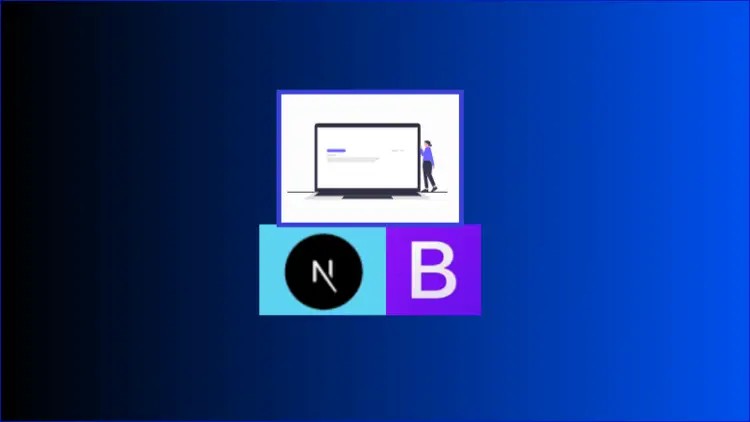
Learn NextJS 14 and Bootstrap 5 with practical examples after this course you will be ready to build real world projects
What you will learn
You will learn to create new next js 14.0 application
You will learn to use Bootstrap5 and next js 14.0 together
You will learn about working of Next js app
You will learn about app router in Next 14.x
You will learn how to apply animation
You will learn when to use Server component and when to use Client component
You will learn how to use Client component and Server components together
You will learn to develop REST API’s in Next JS
You will also learn to consume REST API in your NEXT JS project
You will also learn to make calls to other microservices.
Description
In this course you will learn NextJS 14 along with Bootstrap5. You will learn different NextJS concepts like routing, API development, making calls to other microservices, Client side rendering, Server side rendering, combining client side and server side components. You will also learn various techniques of passing data between components and how to use bootstrap and animation. After this course you will ready to work in NextJS 14 in any company and also build any real world project.
Next.js is a powerful and popular open-source React framework that enables developers to build modern and efficient web applications. Launched by Vercel, Next.js simplifies the React development process by providing a robust structure and a range of built-in features.
One of Next.js’ key strengths is its support for server-side rendering (SSR) and static site generation (SSG). This means that web pages can be pre-rendered on the server, enhancing performance and search engine optimization. Additionally, Next.js supports client-side rendering, offering flexibility in choosing the rendering method that best suits a project’s needs.
‘;
}});
The framework’s automatic code splitting allows for optimized loading times, ensuring that only the necessary code is sent to the client. With a strong focus on developer experience, Next.js provides a wealth of features, including hot module replacement, automatic routing, and a plugin system for extensibility.
Next.js is well-integrated with the Vercel platform, offering seamless deployment and hosting solutions. Its popularity has grown rapidly within the web development community, thanks to its ease of use, performance benefits, and the ability to handle both small projects and large-scale applications. Whether you’re a beginner or an experienced developer, Next.js empowers you to build modern, scalable, and high-performance web applications with ease.
Next.js is a feature-rich React framework that simplifies the development of web applications. Some of its key features include:
- Server-Side Rendering (SSR): Next.js enables SSR, allowing web pages to be pre-rendered on the server before being sent to the client. This enhances performance and improves search engine optimization.
- Static Site Generation (SSG): In addition to SSR, Next.js supports SSG, where pages can be generated at build time. This approach is useful for content that doesn’t change frequently, resulting in faster page loads.
- Automatic Code Splitting: Next.js automatically splits code into smaller chunks, sending only the necessary code to the client. This leads to improved loading times and a better user experience, especially on slower networks.
- Client-Side Rendering (CSR): While SSR and SSG are emphasized, Next.js also supports traditional client-side rendering when needed, offering flexibility in choosing the rendering approach based on specific use cases.
- Routing: Next.js has automatic route handling based on the file system, making it intuitive for developers. Custom routes can also be configured easily, allowing for more complex application structures.
- API Routes: Next.js simplifies the creation of API endpoints by providing a straightforward way to build serverless functions within the project. This facilitates seamless communication between the client and server.
- Hot Module Replacement (HMR): Developers benefit from HMR, which allows for real-time code updates without requiring a full page refresh. This feature speeds up the development process and enhances the developer experience.
- Middleware Support: Next.js supports middleware, allowing developers to execute custom logic before handling a request. This is particularly useful for tasks like authentication and data fetching.
- Built-in CSS Support: Next.js provides built-in support for styling with CSS, whether it’s traditional CSS, CSS Modules, or popular CSS-in-JS solutions like styled-components.
- TypeScript Support: Next.js seamlessly integrates with TypeScript, providing static typing for enhanced code quality and developer productivity.
- Vercel Integration: Next.js is developed by Vercel, and it integrates well with the Vercel platform for deployment and hosting. This combination simplifies the deployment process and offers features like automatic previews and rollbacks.
